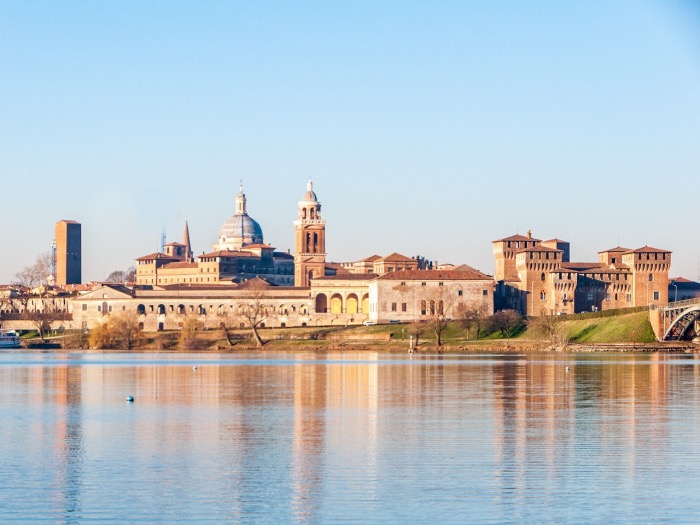
WORKS OF ART IN MANTUA YOU MUST SEE: THE MUST-SEE MASTERPIECES
Mantua is a treasure trove, but which works of art in Mantua are a must-see?
In this post you will find a list of the must-see works of art in Mantua, allowing you to discover the city through an itinerary in which art and beauty are the only necessary guides.
Must-see works of art in Mantua
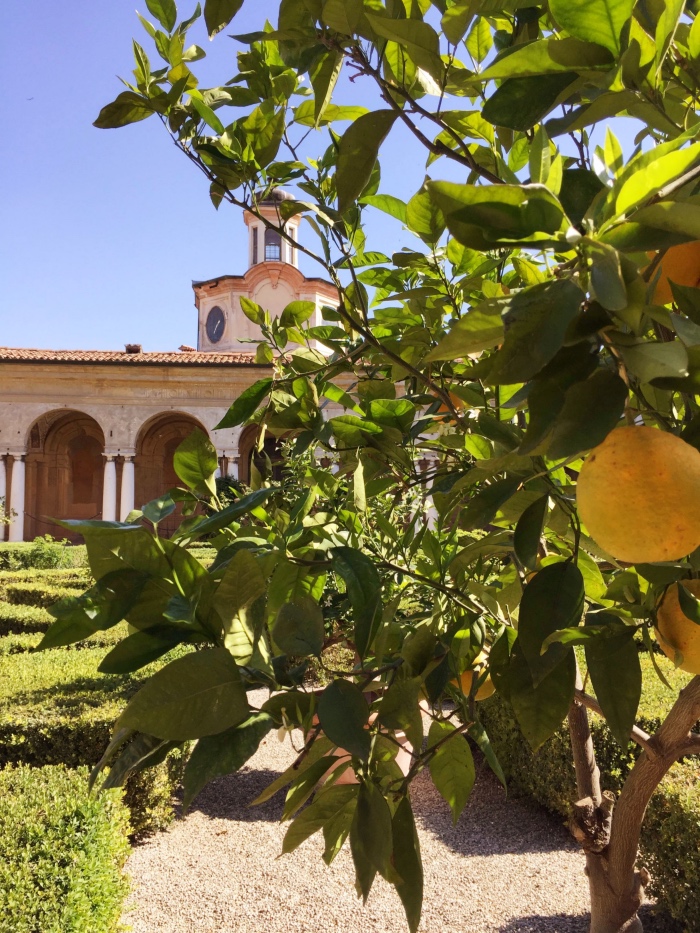
Mantua is a city rich in artistic and cultural treasures, with a historical and artistic heritage of great value. Here are the most important works and places to see in Mantua and the reasons why they are important.
THE BRIDAL CHAMBER BY MANTEGNA
The Bridal Chamber contains a series of frescoes painted by the Italian painter Andrea Mantegna between 1465 and 1474 for the Marquis of Mantua, Ludovico III Gonzaga, in the castle of San Giorgio.
The Bridal Chamber consists of a series of scenes depicting the court life of the Marquis and his family, such as the wedding between Marquis Ludovico III Gonzaga and his bride Barbara of Brandenburg.
The frescoes are detailed and made with an innovative use of perspective, such as in the scene in which Mantegna used the trompe l’oeil technique to create the illusion of an open space into which observers seem to be able to enter.
The Bridal Chamber is considered one of Mantegna’s most important works and one of the masterpieces of the Italian Renaissance.
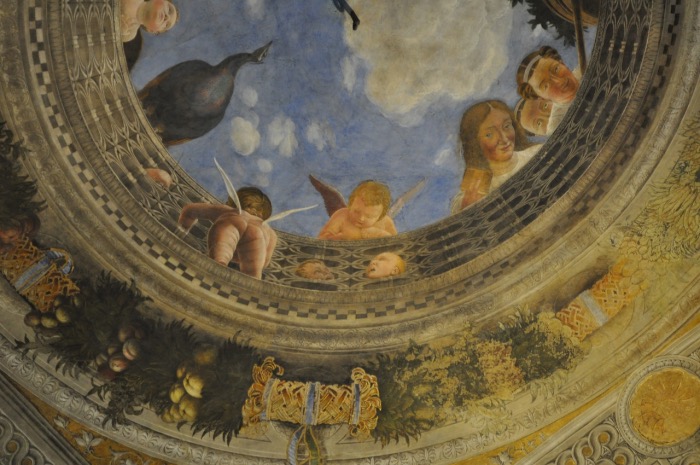
ISABELLA D’ESTE’S STUDIOLO
The Studiolo di Isabella d’Este is a room located inside the Ducal Palace in Mantua. It was commissioned by Isabella d’Este, one of the most important women of the Renaissance, who was very influential in the artistic, political and cultural spheres.
Isabella d’Este’s Studiolo was realised between 1499 and 1502, with the collaboration of important artists of the time, and was intended for the collection and display of rare, precious objects of great artistic and cultural value, such as books, coins, hardstone objects, paintings and oriental art objects.
The Studiolo is a small but fascinating room. It is decorated with intricate wood marquetry and adorned with paintings and frescoes depicting allegorical and mythological scenes. The ceiling is painted with a starry sky and some windows, created with the trompe-l’oeil technique, give the impression that the space is larger than it actually is.
Isabella d’Este’s Studiolo represents a significant example of a Renaissance study and collection room and is one of the main attractions of the Ducal Palace in Mantua.
PORTRAIT OF GIULIO ROMANO
There is a portrait of Giulio Romano preserved in the Ducal Palace in Mantua, painted by the Italian painter and sculptor Paolo Veronese around 1560.
The Portrait of Giulio Romano is a work of considerable artistic importance, painted by Giulio Romano, a pupil of Raphael, who was one of the most important artists of the Italian Renaissance and was very active in Mantua, as he worked on numerous artistic projects for the Gonzaga family.
The portrait depicts Giulio Romano in a full-length, upright position, wearing a black suit, a white shirt and a black hat. The painting is characterised by great technical virtuosity, evident in the rendering of the fabrics, hands and face of the figure.
The painting is currently inside the Ducal Palace in Mantua, which also houses other important works of art in the city, such as the frescoes of the Bridal Chamber by Andrea Mantegna and the Studiolo of Isabella d’Este, which I described earlier.
THE CHAMBER OF GIANTS
The Giants’ Room is a room located on the piano nobile of the Palazzo Te in Mantua, a 16th century building constructed at the behest of the Duke of Mantua Federico II Gonzaga as his summer residence and designed by architect Giulio Romano.
The Chamber of the Giants is famous for the frescoes covering the walls, depicting giant figures and Greek and Roman gods. These figures are painted with a high degree of realism, with light and shadow effects creating a strong sense of depth and space. The decoration of the Chamber of the Giants represents one of the masterpieces of Mannerism.
The Chamber of the Giants owes its name to the gigantic figures painted on the walls, representing Greek and Roman gods such as Neptune, Saturn and Jupiter, along with allegorical figures such as Fortune and Fame. The overall effect of the decoration is to create an illusion of grandeur and power, with the figures seemingly emerging from the walls to dominate the surrounding space.
The Camera dei Giganti is one of the main attractions of Palazzo Te in Mantua and is open to visitors who can admire its frescoes in all their magnificence.
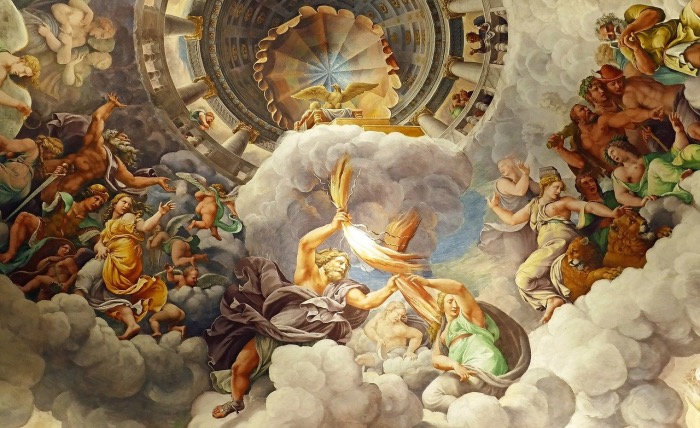
THE HALL OF LOVE AND PSYCHE
The Hall of Cupid and Psyche is a room located inside the Palazzo Te in Mantua, a 16th century building designed by architect Giulio Romano for the Duke of Mantua Federico II Gonzaga.
The Room of Cupid and Psyche owes its name to the frescoes decorating the walls, which depict the mythological events of the love between Cupid (or Eros) and Psyche, a popular theme in Renaissance artistic culture.
The frescoes were painted by Giulio Romano and his group of collaborators between 1526 and 1530, using the fresco technique.
The pictorial cycle consists of several scenes, which narrate the mythological episode of the love between Cupid and Psyche. The scenes include their meeting, the marriage between the two, the trials Psyche must overcome to prove her love and, finally, their divine union.
The frescoes are characterised by great technical virtuosity, with great attention to detail and a very realistic rendering of the characters and settings.
The significance of the Hall of Cupid and Psyche goes beyond a simple mythological narrative and represents an ideal celebration of love and beauty, values that were very important to Renaissance culture. Moreover, the Hall of Cupid and Psyche was also used as a room for representation and entertainment for the Duke and his court, and its decoration is part of a broader artistic and iconographic programme that celebrated the grandeur and power of the Gonzaga, the ruling family of Mantua.
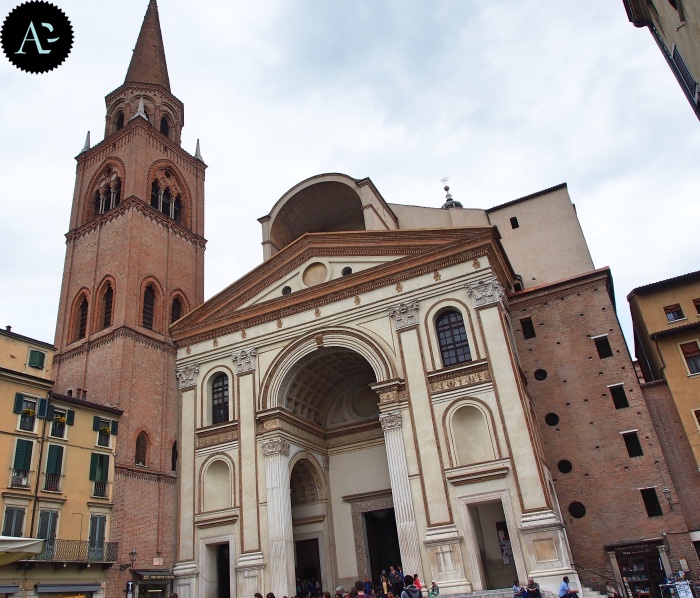
THE BASILICA OF SANT’ANDREA
The Basilica di Sant’Andrea is one of the most important churches in Mantua, located in the city’s historical centre. Here are some of the main elements worth observing inside:
- Polyptych of St. Luke: located in the apse of the basilica, it is a polyptych painted by Andrea Mantegna in 1453. The painting depicts the Madonna and Child with Saints, with St. Luke on the left and St. Andrew on the right. The polyptych is characterised by an intense perspective depth and a detailed and realistic rendering of the characters.
- Frescoes by Luca Signorelli: inside the Chapel of St. John the Baptist are frescoes by Luca Signorelli depicting the life of the saint. The frescoes, painted between 1491 and 1492, are among the artist’s most important works and show great technical virtuosity and attention to the human figure.
- Relics: among the relics preserved in the basilica are those of St Andrew, to whom the church is dedicated, and those of St Longinus, the Roman soldier who pierced Jesus’ side with a lance during the crucifixion.
- Giulio Romano: the great Renaissance artist Giulio Romano, a pupil of Raphael, is buried in the chapel dedicated to him inside the basilica.
In summary, the Basilica di Sant’Andrea is a place of great artistic and historical value that deserves a thorough visit to admire its architecture, works of art and treasures.

